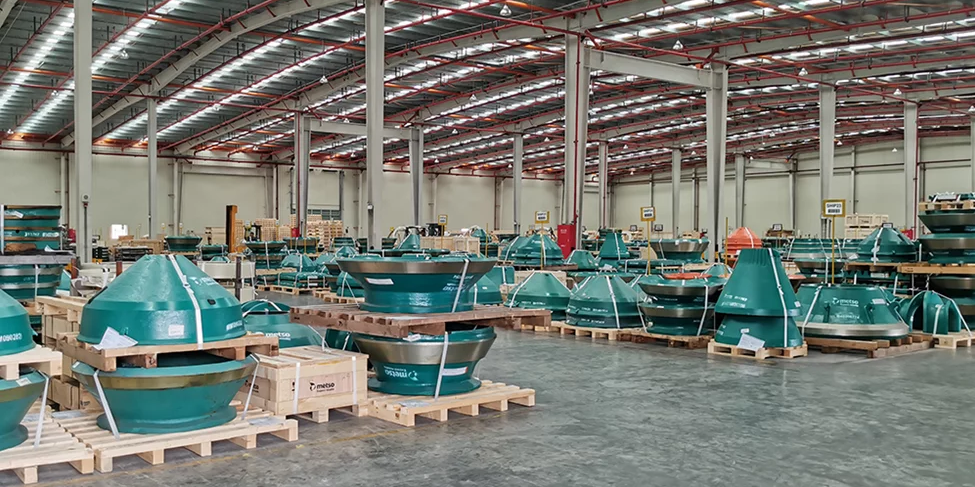Logistics aligned with the 1.5 °C journey
Metso Outotec is targeting a net positive impact on the planet with a commitment to the 1.5 °C journey. Logistics actions can have a big impact on company’s CO2 emissions; therefore, we have set a target to reduce the CO2 emissions of our logistics by 20% by 2025.

A smaller footprint and optimized warehouse location will decrease end-to-end CO2 emissions
Reducing the warehouse footprint is a fundamental matter and thus is a major on-going project in Metso Outotec logistics. The strongest focus in logistics is often in transportation and in ways to make individual transports as efficient as possible. Metso Outotec has started to use new footprint warehouses that are run by our key strategic Logistics Service Providers. Their core competence is warehousing, and Metso Outotec will benefit from their development of sustainable warehouse premises and operations. An optimal warehouse footprint is in place, and consolidation as well as further development actions are on-going. Thirteen warehouses are run by Logistics Service Providers whose sustainability targets are aligned with Metso Outotec’s targets.
Focus on packaging brings big positive impacts
Smaller details, such as packaging design, the amount of packaging material, and reutilization, are often ignored, but we have recognized that small actions can have big positive impacts. For example, using the lightest possible packaging and only the amount of packaging materials necessary for safe transport will reduce the total weight transported and therefore have a direct impact not only on the transportation cost but also on CO2 emissions. Selecting a certain range of packaging materials and optimized packaging in general enables the correct transportation mode to be selected.We concentrate on the global warehouse footprint. Smaller details, such as packaging design, the amount of packaging material, and reutilization, can have big positive impacts.
Optimizing the logistics network is the key to sustainable logistics
Well planned processes and an optimized logistics network are the keys to both lean and more sustainable logistics. The biggest challenge is to create a model that is simple, but simultaneously works for different demands and provides necessary flexibility. We are continuously looking for new and more efficient ways to meet customer demands and the effective utilization of the logistics network. We will be even smarter with the transportation lanes and avoid unnecessary transportation.
We optimize transportation lanes and work closely with the logistics service providers to avoid all unnecessary stops, achieve all possible benefits, and avoid unnecessary costs and non-valuable transportation. The number of stops in the network is one of our official logistics KPIs (Key Performance Indicators). We have been able to reduce the stops significantly and are currently under two. Commitment to sustainability and the willingness to align with our targets and actions are important aspects in our selection of logistic partners. In 2020 we increased the collaboration with partners who have strategies that align with ours and targets for sustainable logistics.We have been able to reduce the stops significantly and we are currently under two.
As part of the warehouse optimization project, we are also reviewing and streamlining the network globally. The target is to have distribution centers located in all the main customer markets and to create a new operating model for transportation. We are looking into having both inbound and outbound transportation set up around the warehouses with our logistics partners. We must ensure business continuity, and the goal is to develop a full end-to-end logistics line while also seeking optimal means of transportation.
![]()





